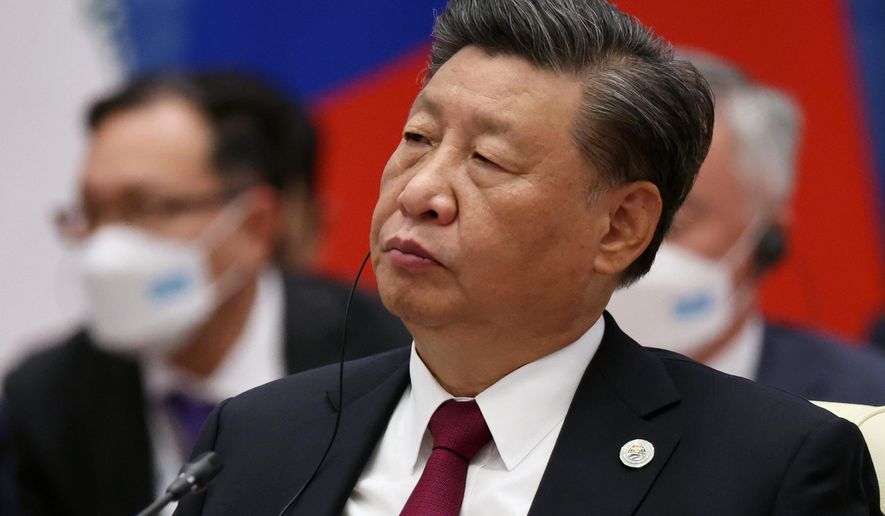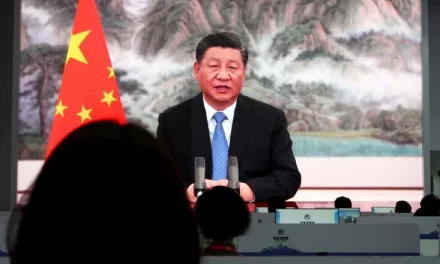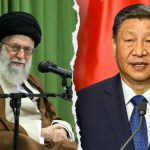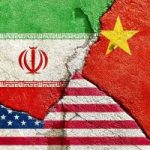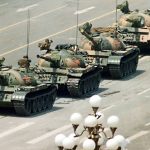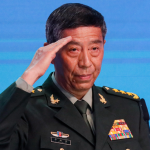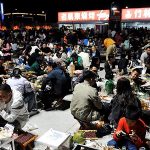By Jianli Yang
China’s president and the Chinese Communist Party’s general secretary, Xi Jinping, commenced his first foreign trip in over two years with a visit to Kazakhstan, returning to the birthplace of the Belt and Road Initiative (BRI) nine years after it was first announced in 2013.
His return to the foreign policy stage in this fashion, for the 22nd Summit of the Shanghai Cooperation Organization (SCO) in Uzbekistan, draws attention to a rejuvenated effort to advance a regional security architecture in China’s immediate neighborhood. A three-day visit to Central Asia one month before the 20th National Party Congress (NPC), where he is likely to be reappointed general secretary of the party for an unprecedented third term, highlights the importance of developing China-led security and economic architecture in its neighborhood.
Beijing’s diplomacy in Central Asia is driven by its security and economic interests, advanced through the SCO, a China-led institutional mechanism with the potential to evolve into a NATO-style coalition in Asia. The SCO is a framework to manage relations between authoritarian states such as China and Russia, promote non-liberal norms and advance an alternative security architecture outside the control of the USA and NATO. The SCO’s expanding membership, which will include Iran by 2023, is an unmistakable sign of the emerging coalition of like-minded authoritarian states in Asia.
Since the establishment of diplomatic ties 30 years ago, Central Asia has evolved into a strategic partner for China: a critical node in the BRI, a gateway for Chinese exports into Europe and an accessible source of energy resources. Oil and gas resources in Central Asia are vital for economic stability in China, where an economic downturn caused partly by rising energy prices threatens stability. In addition, BRI projects in Central Asia are essential for China’s energy security interests. Of the 55 planned, in-progress or implemented BRI projects in Kazakhstan, almost half are in the oil and gas sector; the rest are in mining, ore processing and machine manufacturing.
In an article published in Kazakh media, Mr. Xi mentioned some key Chinese infrastructure projects in the country to highlight the complementarity in economic interests between China and Kazakhstan. For China, developing connectivity routes around the Silk Road is essential to project its rejuvenation and proclaim the success of Mr. Xi’s flagship foreign policy initiative, the BRI. China’s economic interests also dovetail with Central Asian states’ plans for economic development, opening the door for security and political cooperation with Beijing.
Kazakhstan’s economic development plan called Nurly Zhol (Bright Path) is infrastructure-heavy and derives from China’s infrastructure-led model of development. Moreover, Central Asia’s overwhelming reliance on a faltering Russian economy is a strong incentive for Kazakhstan and other states to diversify their economic relationships.
Such converging economic interests are layered on top of political and security engagement, cultivating influence and eliciting cooperation from Central Asian states on issues like separatism, deportation of Uyghur Muslims back to China and countering the influence of the USA in the region. An example of how economic interests intersect with security interests is Tajikistan’s decision to cede over 1,100 square kilometers of land claimed by China in exchange for debt forgiveness in 2010.
Security cooperation between Central Asian states and China has evolved within the framework of the SCO and outside it as well. The SCO has positively appreciated China’s ability to secure its security interests with Central Asian states through bilateral and institutional channels. For instance, the Quadrilateral Cooperation and Coordination Mechanism (QCCM), a counterterrorism forum between China, Afghanistan, Pakistan and Tajikistan for intelligence sharing between militaries of the four countries, evolved due to the relationships and practices established through the SCO.
Multilateral institutions and diplomatic overtures have laid the groundwork for China’s security partnerships and power projection capabilities in the region. For example, Beijing has established a People’s Armed Police (PAP) base in Tajikistan with hundreds of personnel and around 20 buildings to conduct patrolling and counterterrorism operations. These bilateral engagements are complemented by large-scale military exercises and drills conducted by SCO member states that prepare the groundwork for a deeper security partnership.
The scope for security cooperation between Beijing and Central Asian states is enhanced by the implications of the war in Ukraine. When Mr. Xi met with Russian President Vladimir Putin at the SCO Summit, he did not mention Ukraine and instead highlighted the importance of being a responsible world power, perhaps reflecting the anxieties of Central Asian states over Russia’s war in Ukraine. The interaction between the two leaders was seen by some analysts as Beijing’s attempt to distance itself from Russia’s war in Ukraine and prey upon the anxieties of Central Asian states.
China’s restrained remarks on the war in Ukraine would score points with Central Asian states like Kazakhstan who have not endorsed Russia’s war and are anxious about the economic and security implications of Russia’s expansion. Some reports even suggest that Kazakhstan has supplied Ukraine with weapons for the war against Russia. It thus is noteworthy that Mr. Xi, in his interactions with Kazakh and Uzbek heads of state, reiterated China’s resolute opposition to interference by any forces in the internal affairs of Central Asian countries. A balanced position on the war in Ukraine, sympathetic to the concerns of Central Asian states, permits Beijing to project its image as a security guarantor in the region.
The SCO’s main area of engagement is counterterrorism, separatism and extremism, three priority areas for China given the proximity of Xinjiang to Central Asia. Kazakhstan and other Central Asian states actively participate in the deportation of Uyghur refugees who escape China, which explains why Mr. Xi mentioned the importance of cooperation in these areas during his Central Asia tour.
During hiss visit to Kazakhstan, activists protesting the custody of family members in China were summoned by the Kazakh foreign ministry and threatened with jail time if they appeared in the capital and staged rallies during Mr. Xi’s visit. Beijing has successfully pushed pliant Central Asian countries to deport Uyghur citizens and intimidate human rights activists. Reports indicate that between 2016 and 2018, nearly 3,000 Uyghurs in Tajikistan and 4,000 Uyghurs in Kyrgyzstan were deported to China.
Through the SCO’s security arrangements and economic incentives, Beijing has successfully promoted illiberal norms and undermined international law to secure its security interests. The convergence of security interests between mostly authoritarian states facilitates the development of a regional security architecture that expands China’s defensive perimeter on its Western borders.
And finally, China’s intention to engineer and expand a security architecture directed against the U.S. and NATO is made evident by Beijing’s opposition to color revolutions. In Uzbekistan, Mr. Xi called on member states of the SCO to prevent color revolutions — popular, pro-democracy movements — by “external forces.” Protecting authoritarian regimes from democratic movements is in China’s interest, and to secure the authoritarian nexus, China has offered to train 2,000 police officers to set up a regional counterterrorism center.
The growing economic and security alignment between authoritarian states, facilitated by the SCO and driven by China’s interests, has the momentum to snowball into a coalition of authoritarian states focused on self-preservation. Given the axis of convenience between Russia and China, deepening cooperation with Central Asian states and expanding membership of SCO to include more authoritarian states like Iran, the SCO has the potential to evolve into an anti-U.S. or anti-NATO coalition meant the strengthen the authoritarian and illiberal characteristics of its leading members.
This article first appeared in The Washington Times on 09/30/2022.

